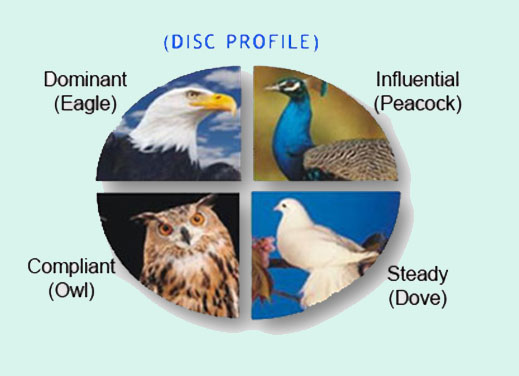Dermatoglyphics History
Dermatoglyphics is the study of ridged skin patterns (also known as dermatoglyphs) which can be found on fingers, palms, toes and soles. These patterns are formed from the external ectoderm and usually occur during the fetal development stage, 13 to 21 weeks after fertilization.
From the anatomical point of view, the human hands dominate all other organs in terms of relative importance. This is why the brain dedicates the majority of approximately two hundred million nerve endings to the hands. In other words, the hands are sources of physiological and psychological information waiting to be tapped, hence the increasing importance in the field of dermatoglyphics. This is the reason why Dermatoglyphics Analysis is fast gaining recognition to uncover our hidden potentials.
Our fingerprints are as invariable which never changes as they are unique. Between year 1626 and 1690, Spanish Dr. Marcello Malphigi pioneered the scientific research on fingerprints. He was also the first Professor or anatomy to utilize the microscope to examine fingerprints and record them. In his research, he discovered that individual fingerprints are unique. DMIT or Dermatoglyphics multiple intelligence test is the analysis of these unique patterns on our fingerprints.
Scientific Data
- 1684 Dr. Nehemiah Grew (1641-1712) presented Finger Prints, Palms and Soles An Introduction To Dermatoglyphics to the Royal Society
- 1685 Dr. Bidloo published an anatomical atlas, Anatomia Humani Corporis, with illustrations showing the human figure both in living attitudes and as dissected cadavers
- 1686 Dr. Marcello Malphigi (1628-1694) noted in his treatise; ridges, spirals and loops in fingerprints
- 1788 J.C. Mayer was the first to write out basic tenets of fingerprint analysis and theorised that fingerprints were unique
- 1823 Dr. Jan Purkinje classified the papillary lines on the fingertips into nine types: arch, tented arch, ulna loop, radial loop, peacock’s eye /compound,spiral whorl, elliptical whorl, circular whorl, and double loop / composite.
- 1823 Joannes Evangelista Purkinji found that the patterns on one’s finger tips and the ridges and lines on one’s prints begin to form at around the thirteenth week in the womb.
- 1832 Dr. Charles Bell (1774-1842) was one of the first physicians to combine the scientific study of neuro-anatomy with clinical practice. He published The Hand: Its Mechanism and Vital Endowments as Evincing Design.
- 1880 The Nature journal published two articles by Professor Henry Faulds and Professor WJ Herschel that recommended the use of fingerprints Dermatoglyphics as a way to uniquely identify and differentiate mankind
- 1892 Sir Francis Galton a British anthropologist and a cousin of Charles Darwin, He published his book, “Fingerprints”, establishing the individuality and permanence of fingerprints. The book included the first classification system for fingerprints.
- 1893 Dr. Francis Galton published his book, “Fingerprints”, establishing the individuality and permanence of fingerprints. The book included the first classification system for fingerprints: Arch, Loop and Whorl.
1897 Harris Hawthorne Wilder was the first American to study Dermatoglyphics. He invented the Main Line Index, studied thenar hypothenar eminences, zones II, III, IV.
- 1920 Columbia University Professor, Elizabeth Wilson striate into state of scientific research, and application of statistical methods
- 1926 Harold Cummins, M.D. aka. the Father of Dermatoglyphics. And C.Midlo, M.D. Studied all aspects of fingerprint analysis, from anthropology to genetics and embryology perspective. 1943 Published book, Finger Prints, Palms and Soles, a bible in the field of dermatoglyphics.
- 1936 Dr. Harold Cummins & Dr. Charles Midlo also researched the embryo-genesis of skin ridge patterns and established that the fingerprint patterns actually develop in the womb and are fully formed by the fourth fetal month.
- 1944 Dr Julius Spier Published The Hands of Children, analysis children’s Psychological personality development using the Dermatoglyphics method.
- 1950 Canada’s brain surgery was a professor Banfill ( Penfeild) published “Body of all parts of the brain associated with the cross-section map, “also shows a finger dermatoglyphics and close of the association between the brain.
- 1957 Dr. Walker used the dermal configurations in the diagnosis of mongolism.
- 1968 Sarah Holt Whose own work ‘The Genetics of Dermal Ridges’ published in 1968, summarizes her research in of dermatoglyphics patterns of both the fingers and the palm in various peoples, both normal and congenitally afflicted.
- 1969 John J. Mulvihill, MD and David W. Smith, MD published The Genesis of Dermatoglyphics that provides the most up to date version of how fingerprints form.
- 1970 USSR Using Dermatoglyphics in selecting the contestant for Olympics. 1980’s China carry out researching work of human potential, intelligence and talents in dermatoglyphics and human genome perspective.
- 1976 Schaumann and Alter’s Dermatoglyphics in Medical Disorders’ published. Significant investigations have also been carried out into the dermatoglyphics indicators of congenital heart disease, leukemia, cancer, coeliac disease, intestinal disorders, rubella embryopathy, Alzheimer’s disease, schizophrenia as well as other forms of mental illness. Dermatoglyphics research being directed into genetic research and the diagnosis of chromosomal defects.
- 1980 China carry out researching work of human potential, intelligence and talents in dermatoglyphics and human genome perspective.
- 1981 Professor Roger W. Sperry and his research partners was awarded the Nobel prize for Biology in their contribution towards the functions of the right brain and left brain as well as the dual brain theory. Research related to the brain enters its peak at this stage. At the same time, it is now widely used by scientists from various other fields.
- 1985 Dr. Chen Yi Mou Phd of Harvard University Research Dermatoglyphics based on Multiple Intelligence theory of Dr. Howard Gardner.First apply dermatoglyphics to educational fields and brain physiology.
- 2000’s Dr Stowens, Chief of Pathology at St Luke’s hospital in New York Claims to be able to diagnose schizophrenia and leukemia with up to a 90% accuracy. In Germany, Dr Alexander Rodewald reports he can pinpoint many congenital abnormalities with a 90% accuracy.
- 2004 IBMBS- International Behavioral & Medical Biometrics Society Over 7000 report and thesis published. Nowadays the U.S., Japan or China, Taiwan apply dermatoglyphics to educational fields, expecting to improve teaching qualities and raising learning efficiency by knowing various learning styles.











